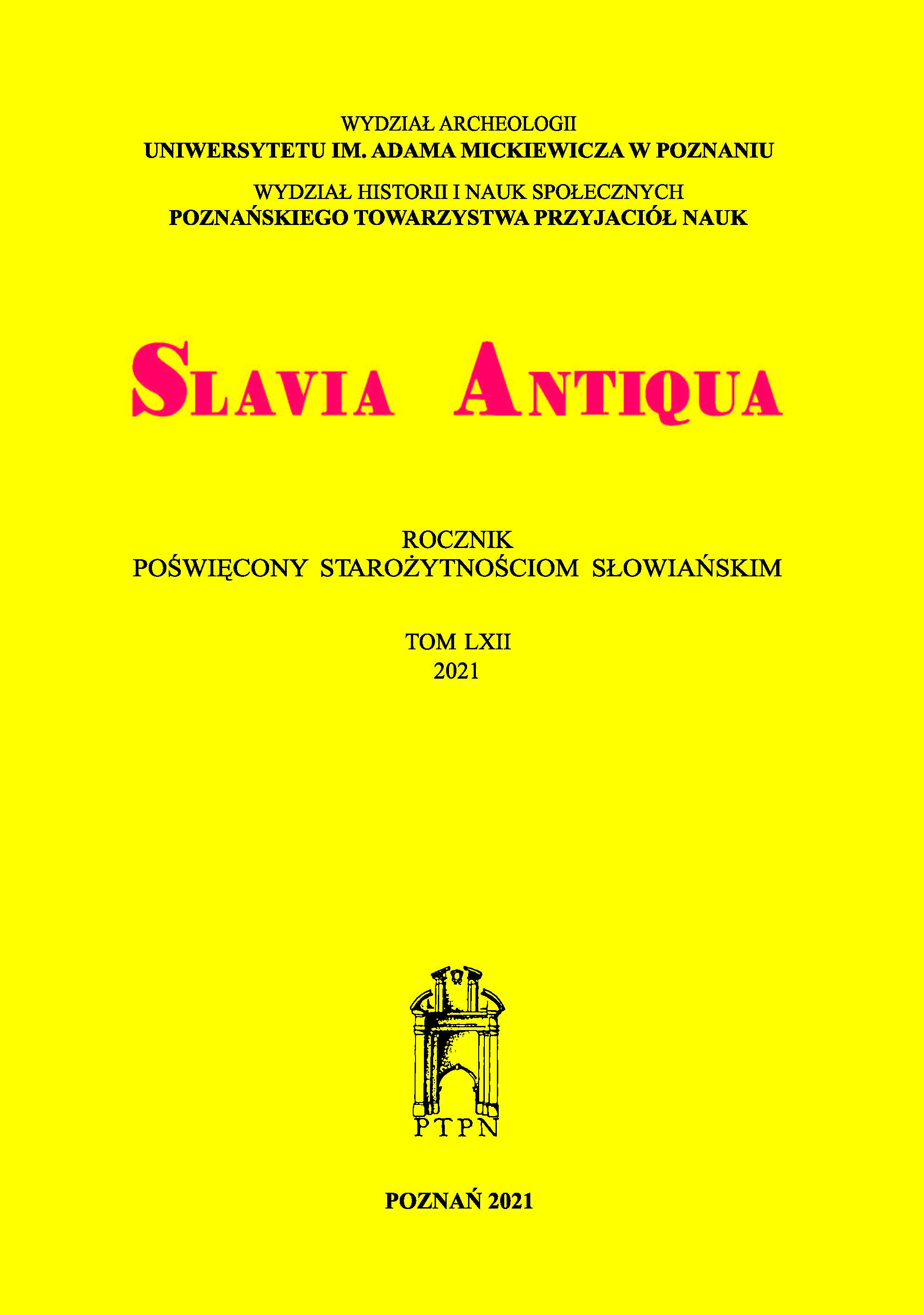PALĄ SIEBIE W OGNIU, GDY UMRZE IM KRÓL LUB WÓDZ – I PALĄ RÓWNIEŻ JEGO WIERZCHOWCE. WCZESNOŚREDNIOWIECZNY POCHÓWEK CIAŁOPALNY ZE SZCZĄTKAMI KONIA Z CHODLIKA, POW. OPOLSKI, WOJ. LUBELSKIE
THEY BURN AT THE STAKES WHEN THEIR KING OR CHIEF DIES AND THEY BURN HIS HORSES TOO. AN EARLY MEDIEVAL CREMATION SITE WITH REMAINS OF A HORSE FROM CHODLIK, OPOLE COUNTY, LUBLIN PROVINCE
Author(s): Łukasz MiechowiczSubject(s): History, Cultural history, Local History / Microhistory
Published by: Uniwersytet Adama Mickiewicza
Keywords: Western Slavs; funeral rites; human and animal burial sites; cremation; kurgan burial; burial with horse
Summary/Abstract: The article presents the results of research into an early medieval kurgan in Chodlik, Karczmiska county, where cremated human and horse remains were discovered. The settlement complex in Chodlik (8th-10th c.) forms a vast hillfort of more than 8 ha and the surrounding hamlets. For over a century, it has been subjected to archaeological excavations but it was not until recently that the related cremation burial sites were identified. The first kurgan, examined in 2010, contained buried remains of a human and a horse, most probably buried at a stake together. The other objects found in the upper part of the kurgan included pieces of clay vessels and bronze elements of a horse tack. By means of radiocarbon dating, the burial site’s chronology has been established as the 8th-9th centuries. The text presents comparative analyses with other famous discoveries of the type and considerations of the importance of horses to the early medieval Slavs.
Journal: Slavia Antiqua. Rocznik poświęcony starożytnościom słowiańskim
- Issue Year: 62/2021
- Issue No: 1
- Page Range: 147-169
- Page Count: 23
- Language: Polish

